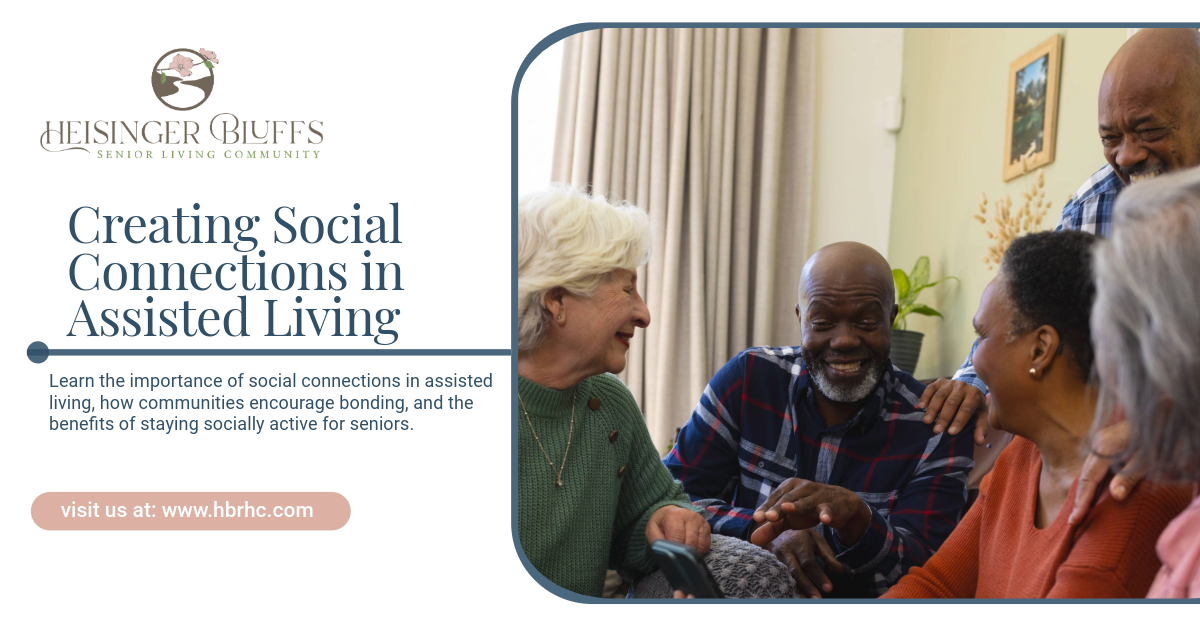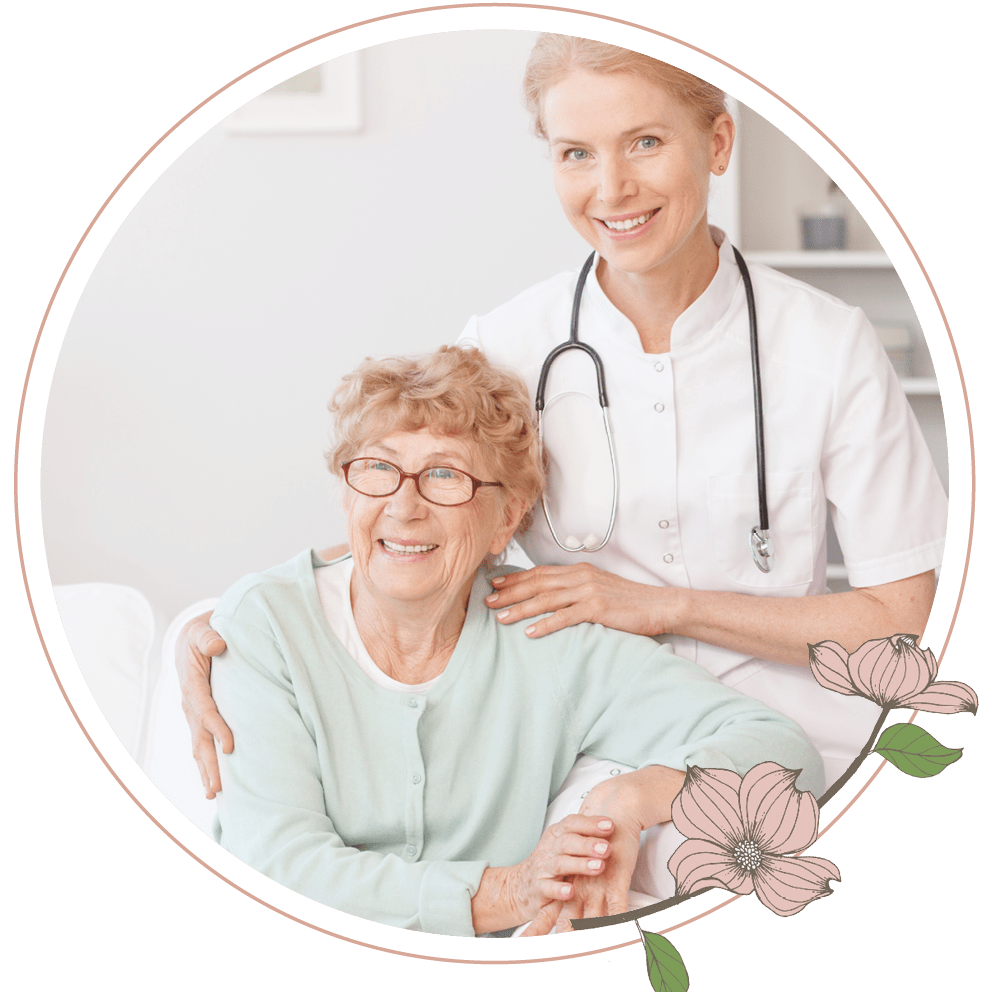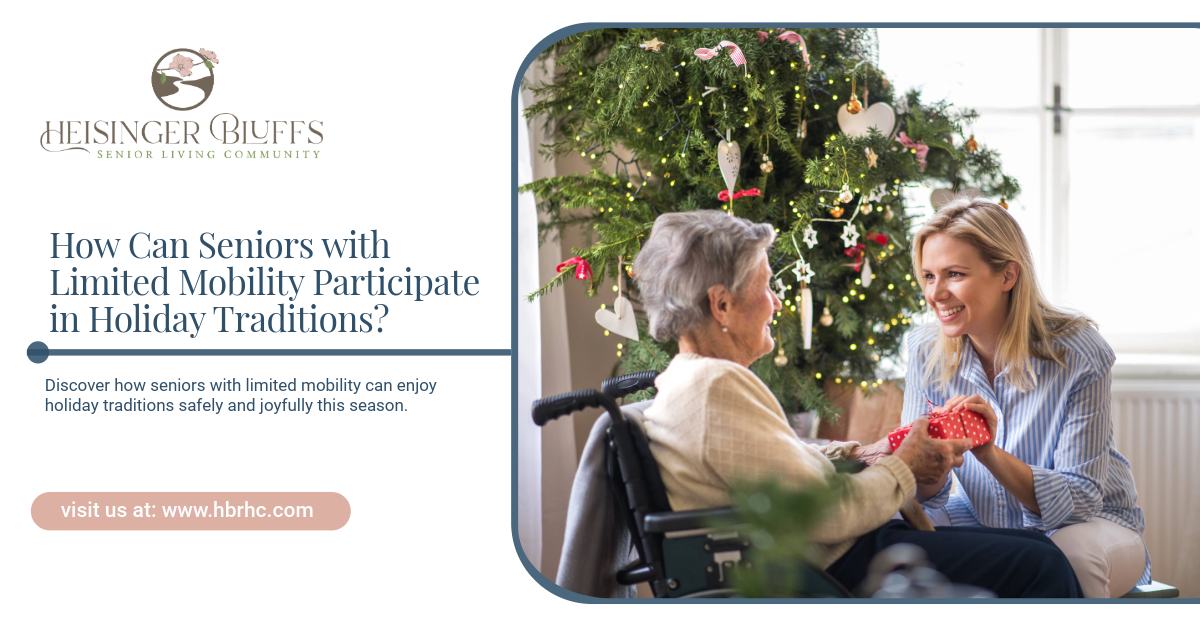The Importance of Creating Social Connections in Assisted Living

Moving into an assisted living community is a major life transition. For many seniors, one of the biggest concerns is whether they will be able to form meaningful social connections. Maintaining friendships and participating in social activities can significantly improve quality of life, emotional health, and overall well-being.
In this blog, we’ll explore why social connections matter, how assisted living communities foster them, and practical ways seniors can thrive socially in their new homes.
Why Social Connections Are Vital in Assisted Living
Human beings are naturally social. For seniors, staying connected is even more important because it directly influences physical, mental, and emotional health.
Benefits of Strong Social Connections:
- Emotional Well-Being: Reduced feelings of loneliness, anxiety, and depression.
- Cognitive Health: Social interactions stimulate the brain and help preserve memory.
- Physical Health: Active social lives are linked to lower risks of heart disease and high blood pressure.
- Purpose and Fulfillment: Friendships create a sense of belonging and purpose.
A socially connected lifestyle in assisted living not only adds joy to everyday life but can also increase longevity.
How Assisted Living Communities Support Socialization
Modern assisted living communities are designed to encourage interaction and relationship-building. From shared dining areas to activity programs, everything is structured to make social engagement easy and enjoyable.
Common Ways Communities Encourage Social Connections:
- Group Dining: Shared meals allow residents to bond over conversations.
- Recreational Activities: Games, art classes, book clubs, and gardening provide fun ways to connect.
- Fitness Programs: Group exercise encourages both health and friendship.
- Events & Celebrations: Holiday parties, dances, and cultural events bring people together.
- Spiritual Services: Shared faith-based activities build community and support.
Overcoming Barriers to Socialization
While opportunities exist, some seniors may find it difficult to make connections at first. Common barriers include:
- Shyness or introversion
- Hearing or mobility challenges
- Recent loss of a spouse or close friend
- Adjusting to a new environment
Tips for Overcoming These Barriers:
- Start Small: Join one activity at a time to ease into socializing.
- Look for Common Interests: Shared hobbies create natural conversation starters.
- Utilize Staff Support: Care teams often help introduce new residents to others.
- Stay Open-Minded: Friendships can form in unexpected places.
Examples of Social Activities in Assisted Living
| Activity | Benefits |
|---|---|
| Group Exercise Classes | Improves health and creates accountability |
| Book Clubs | Stimulates the mind and encourages discussion |
| Arts & Crafts Workshops | Boosts creativity and provides relaxation |
| Movie Nights | Shared entertainment and group bonding |
| Gardening Groups | Physical activity with rewarding outcomes |
| Music Therapy Ses | Enhances mood and memory while socializing |
The Role of Family in Social Connections
Families also play a vital role in helping seniors build connections in assisted living. Regular visits, phone calls, or participation in community events encourage residents to feel supported and more willing to engage with others.
Families can also work with staff to identify activities their loved one might enjoy, making the transition smoother.
How Technology Helps Seniors Stay Connected
Technology bridges gaps between residents and their families while also supporting new friendships. Assisted living communities often provide access to:
- Video Calls: Stay connected with family across distances.
- Social Media Groups: Join community forums and share updates.
- Online Games: Play interactive games with other residents or family members.
- Virtual Events: Attend concerts, workshops, or lectures remotely.
Long-Term Benefits of Social Engagement
Seniors who actively build and maintain social relationships experience:
- Greater independence due to emotional and mental resilience.
- Improved physical health from reduced stress levels.
- Stronger sense of identity and purpose within the community.
- Lasting friendships that enrich daily living.
Final Thoughts
Creating social connections in assisted living is essential for maintaining emotional, mental, and physical health. From structured activities to casual conversations, every interaction plays a role in building a sense of community.
For seniors and families exploring assisted living, it’s reassuring to know that communities like Heisinger Bluffs place a strong emphasis on helping residents feel connected, engaged, and truly at home. Contact us today!
Frequently Asked Questions
Why are social connections important for seniors in assisted living?
Social connections reduce loneliness, improve mental health, and enhance physical well-being, making life more fulfilling.
What activities help residents make friends?
Group dining, exercise classes, book clubs, gardening, and holiday celebrations are some of the most effective ways.
How can introverted seniors socialize more easily?
They can start with small group activities, seek one-on-one conversations, and lean on staff for introductions.
Can families help their loved ones build connections?
Yes, family visits, participation in community events, and encouraging loved ones to join activities make a big difference.
Does technology really help seniors stay socially active?
Absolutely. Video calls, online games, and virtual events help seniors connect with both family and fellow residents.
Sources:
- https://pmc.ncbi.nlm.nih.gov/articles/PMC2527715/
- https://www.sciencedirect.com/science/article/pii/S0167494323000596
- https://pmc.ncbi.nlm.nih.gov/articles/PMC2247412/
- https://pmc.ncbi.nlm.nih.gov/articles/PMC10850371/
- https://www.healthinaging.org/tools-and-tips/caregiver-guide-mobility-problems











